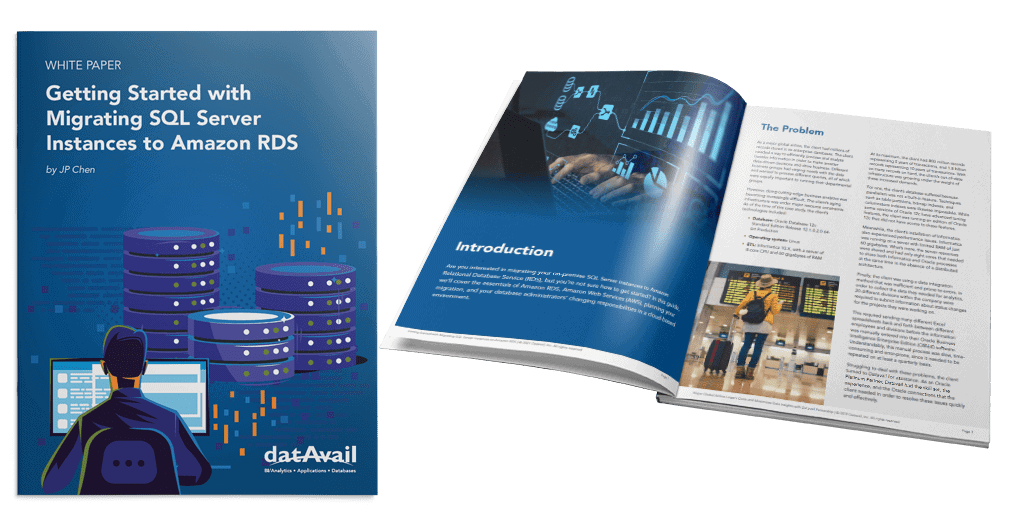Getting Started with Migrating SQL Server Instances to Amazon RDS

What Is Amazon RDS?
Amazon RDS is a Platform as a Service (PaaS) offered by AWS. It provides a Database as a Service (DBaaS) product that is fully managed and in the cloud. Unlike Infrastructure as a Service (IaaS) solutions, you do not have access to the underlying operating system or the system administration.
Why Migrate Your SQL Server Database to Amazon RDS
Today’s organizations are looking to migrate their on-premises database instances into the cloud with SQL Server being no exception and Amazon RDS is one such option. A move to a managed environment like Amazon RDS gives organizations an opportunity to focus on innovation and building new applications rather than managing the infrastructure. Amazon RDS provides:
- Provisioning of quick and easy database setups, operations, and scaling.
- Flexibility that enables both horizontal and vertical provisioning.
- Built-in automation reduces the cost of routine administrative tasks, such as patching, disaster recovery (DR), backups, and administrative functions.
This guide is intended for database administrators (DBAs), database managers, database directors and database architects interested in making the migration and can expect to learn:
- What Amazon RDS is for SQL Server and the reasons organizations are migrating to Amazon RDS.
- Details around AWS Regions, AWS Availability Zones (AZs), Amazon Simple Store Service (S3) and Amazon Identity and Access Management (IAM).
- A deep dive into how to plan your cloud migration from SQL Server to Amazon RDS migration.
- What the shifting priorities and responsibilities will be for DBAs post-migration.
Datavail Can Help Make Your Migration Seamless
Datavail makes migrating your existing SQL Server database to Amazon RDS a breeze, so you gain all its benefits in addition to achieving exceptional reliability. We can help:
- Select the exact right type of database instance class and storage capacity for your organization.
- Determine your configuration’s deployment based on AZ needs, “security groups” (similar to firewalls, these perimeters control inbound and outbound database traffic), and option groups that connect DB instances with the data management options that are best suited for their functions.
- Provide post-migration support and guidance on what your database administrator(s) (DBA) will be responsible for.
Fill out the form to download the paper and learn more about our AWS Managed Database Migration Services if you’re ready to start planning your migration.
Download the White Paper